Lecture
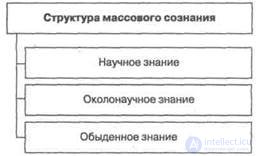
Scheme 14.1 . The structure of mass consciousness
Scientific knowledge is the latest achievements of science, as well as true, proven ideas about all areas of life, including the science of society.
Near-scientific knowledge is a para-scientific quasi-life accumulated over many centuries by science that has not been proved by science.
Ordinary knowledge is representations of the masses, which include not only knowledge, but also parasitism, religious ideas, superstition, signs. Ordinary knowledge is different from scientific. It represents the refraction of scientific and parascientific knowledge into the individual consciousness of each person. Therefore, in the individual plan, it varies very widely, taking into account the large difference between people in intelligence, education, life experience, character traits.
Under the mass consciousness in a philosophical, broad sense, we mean the totality of the spiritual life of society, all the circulating views, ideas, ideas, theories, moral and ethical views, religious concepts, superstition, prejudice, signs and other forms of social consciousness.
Mass consciousness in a sociological, narrower sense means the prevailing system of values that determines the attitude of individuals to the world and society in which they live, and ultimately the social behavior of the individual.
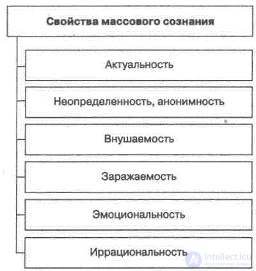
Scheme 14.2. The properties of mass consciousness
Relevance - focus on the most pressing, burning problems affecting the interests of the majority of the population.
Uncertainty, anonymity mean that the mass consciousness is of little interest to the exact source, its objectivity, and science. The main thing is that the information is curious and affects interests. Therefore, rumors and gossip spread rapidly in the mass consciousness. Often messages begin with the words: "they say," "I heard," "broadcast on television."
Suggestibility. According to G. Lebon, the crowd is more suggestible than a single individual.
Contagiousness - the rapid dissemination of information in the mass consciousness.
Emotionality - brightness, intensity and quick change of moods, ratings, attitude to leaders.
Irrationality is a scientific inexplicability of the state and change of mood of the mass consciousness.

Scheme 14.3. The essence of public opinion from the point of view of the classics
Parmenides. Opinion: inaccurate, obscure, incomplete, unsustainable knowledge. Knowledge: accurate, clear, complete information.
Plato and Aristotle considered opinion as the connecting link between sensory and comprehensible knowledge.
Kant divided the categories of “opinion”, “faith”, “knowledge” according to the degree of attainment of truth:
• opinion - a subjective judgment (of an individual) and objective judgment (of a society) that does not reflect the full truth;
• faith - truth that has a sufficient basis on the subjective side, but insufficient - on the objective;
• knowledge - the truth, having a sufficient basis from the subjective and objective side.
Kant considered opinion to be a judgment on the world of phenomena (phenomena), not capable of penetrating into the essence of things (noumenons).
Hegel noted the inner contradiction of the universal and the true with the special and own, embodied in public opinion, its randomness, falsity, subjective ignorance and perversion.
Tarde considered the basis of public opinion spiritual processes that manifest and spread through communication. Tarde considered the bearer of public opinion a smaller, educated part of society - the public.
Lowell in the work "Public Opinion and People's Government" (1926) concluded that public opinion has limited competence due to its subjectivity, lack of information, emotionality. Consequently, although the technical capabilities of the XX century. allow to find out the opinion of everyone, complex political problems must be addressed by competent governments. Most are not always right; they are not always able to find the optimal solution.
Lippman in his work "People's Philosophy" (1955) argued that. “The average person”, receiving distorted, incomplete information, simplistically understands social processes, does not see the connection of social phenomena, development trends. This is not an omniscient and omnipotent citizen, but a simple layman who judges the surrounding reality on the basis of stereotypes of thinking.
Public opinion is a state of mass consciousness that embodies the attitude (hidden or explicit) of various groups of people to events and facts of social reality.
Public opinion is the evaluative and cognitive activity of social communities, which finds expression in collectively developed and widely distributed judgments, emotions, and behavioral attitudes about socially significant problems and phenomena.
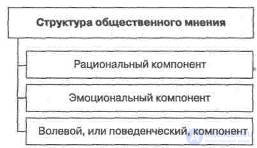
Scheme 14.4. Public Opinion Structure
A rational component is specific information, knowledge about social facts, phenomena and processes that have become the object of public attention. This also includes visual knowledge, which is formed with the help of imagination and helps to get a general picture of the event. The determining component of public opinion.
The emotional component is a synthesis of mass sensations, moods, social feelings and emotions expressed in partisan experience. Gives a picture of public opinion expressiveness, colorfulness, emotionality.
The volitional or behavioral component is manifested in the ability of public opinion to directly influence the course of social processes and people's behavior.
Some sociologists limit the structure of public opinion to only two components (for example, V. Padorin). Others, given the active principle inherent in each person, include a volitional or behavioral component in the structure of public opinion (M. Gorshkov, O. Ivanov).
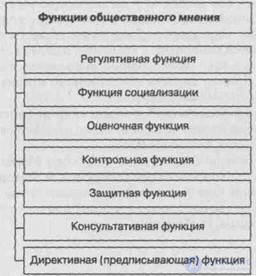
Scheme 14.5. Opinion Functions
The regulatory function allows you to maintain and change the existing system of values, norms and patterns of behavior in society, to regulate human relationships, as well as social relations in all areas of society.
The function of socialization is to form in each individual, under the influence of public opinion, a system of values, norms and patterns of behavior.
The evaluation function shows the value-normative attitude of people to social phenomena. It is especially pronounced during sociological polls, interviews, statements by political and cultural figures, as well as in everyday communication.
The control function is to provide a moral impact of society on power in order to bring social processes in line with people's ideas.
The protective function allows you to ensure human rights and freedoms, restore violated justice.
The advisory function is to obtain advice, information, suggestions to a particular public institution or official for solving urgent social problems.
A directive (prescriptive) function takes place with developed and authoritative public opinion and a high culture of society. It manifests itself in the direct, non-aggressive impact of public opinion on the solution of public problems.
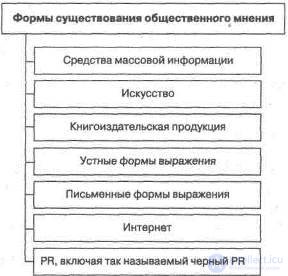
Scheme 14.6. Forms of the existence of public opinion
Mass media:
♦ television;
♦ periodicals: newspapers, magazines, programs, booklets;
♦ radio. Art:
♦ movies;
♦ painting and graphics;
♦ sculpture (including monumental) and other publishing products:
♦ books;
♦ albums;
♦ posters;
♦ brochures, etc.
Oral forms of expression of OM:
♦ rallies;
♦ demonstrations;
♦ meetings;
♦ speeches, speeches, reports;
♦ polls and interviews;
♦ conferences. Written forms of expression OM:
♦ appeals of citizens, organizations;
♦ petitions;
♦ resolutions;
♦ declarations, memoranda;
♦ programs, slogans;
♦ articles;
♦ statements, open letters.

Scheme 14.7. Qualitative characteristics of public opinion
Prevalence .
♦ Depends on the public interest in the problem, its vital
importance, relevance, significance for a large number.
people. In addition, factors such as
tiya society, citizen awareness; their educator
new level, media work, position
authorities to respect freedom of speech and other human rights.
Intensity. It depends on:
♦ the severity and urgency of the problem;
♦ state of public consciousness;
♦ traits of a national character;
♦ the level of development of society and the state of the economy and social sphere. .
Stability. It characterizes the inertia of public opinion, its existence without sharp ups and downs, revaluation of values and norms. Stability depends on:
♦ level of civilization and the historical stage of development of society (peace stage, war, revolution);
♦ state of society (split, normal, emphasized unity);
♦ general culture, tolerance (tolerance), pluralistic ™ (assumptions of different opinions);
♦ commitment of the elite and the majority to the same value orientations.
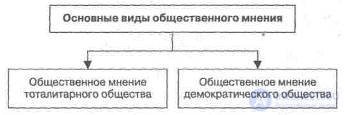
Scheme 14.8. The main types of public opinion
Totalitarian society. Here, public relations are controlled by political police and political censorship, ideology dominates, that is, a strictly defined system of values and norms, to which every member of the society is obliged to obey; the state absorbs civil society, leaving no room for the usual forms of existence of free and open public opinion. It exists officially in the form of party congresses, demonstrations, meetings, expressing the unity of society and power. Real public opinion (open and free expression of opinions) takes the form of “kitchen” conversations, rumors, gossip, underground, non-conformism, and protests. In a totalitarian society, public opinion has a unitary character and its importance in managing society is manifested in imitation or in its neglect.
Democratic society. Here, civil society has the opportunity to distance itself from a state that respects rights and freedoms. Individual opinions of people are not processed daily, and therefore there is diversity, pluralism of opinions. Public opinion is included in the process of managing society. State structures take into account public opinion, rely on it, implement public opinion.
Of great importance for each country is world public opinion, which is based on UN documents (primarily on the Declaration of Human Rights) and international law.
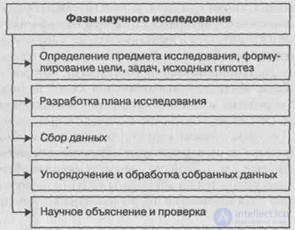 |
Comments
To leave a comment
Sociology
Terms: Sociology